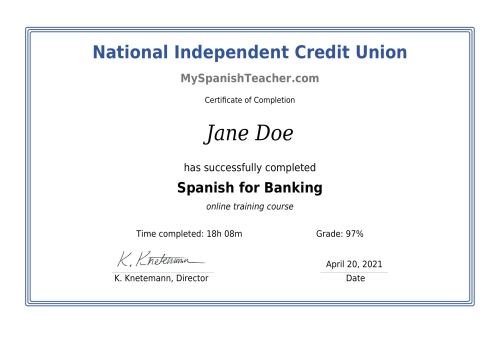6 months unlimited access
Spanish for Healthcare

Spanish for Healthcare: Your Ultimate Guide to Effective Communication in the Medical Field
As the healthcare industry continues to grow and diversify, the ability to communicate effectively with patients of different cultures has become increasingly important. Learning Spanish has become an indispensable language tool for healthcare professionals in the United States.
By speaking Spanish, healthcare professionals can better understand their patient's needs, concerns, and medical histories, leading to more accurate diagnoses and treatment plans.
Moreover, Spanish-speaking patients are more likely to seek care when they can communicate effectively with their healthcare provider. This can result in improved health outcomes, higher patient satisfaction, and stronger relationships between patients and healthcare providers.
In today's rapidly changing healthcare landscape, being bilingual in Spanish is not only a valuable skill but also a necessity. Healthcare professionals who invest in learning Spanish can gain a competitive edge in their careers while also making a positive impact on their patients' lives.
An Online Spanish Course for Doctors, Nurses, and Hospital Staff
This online Spanish course is specifically designed for doctors, nurses, and hospital staff who want to improve their communication skills with Spanish-speaking patients and colleagues. Through a combination of interactive lessons, medical vocabulary practice, and conversation exercises, participants will enhance their understanding of Spanish in healthcare settings and be better equipped to provide high-quality patient care to the Hispanic community.
To receive your certificate, complete the following: Spend 15 hours online (the program automatically tracks your time) and complete the online course assessments with 70% or higher. (you may re-take a test anytime)

What is Included in the Training?
- Receive a certificate of completion upon completion
- Accessible 24/7, making Spanish learning fit into a busy working schedule and in the comfort of your home
- Support hub 24/7 available - ask your licensed instructor any questions over your professional course material and training. Real teacher contact!
- Unlimited access of course material
- Great Success rates, Check out our student testimonials page!
- Custom alerts to track your progress through the Spanish course. (weekly, daily word of the day)
- Affordable course to develop your career and Spanish skills
- No software to download. Use a standard internet browser on desktop or mobile
Annual License – Empower Staff Members with Spanish Skills
This Spanish course is also available as an Annual Subscription License. We are dedicated to reaching as many working professionals as possible to provide functional interactive Spanish training while sharpening professional development. Therefore, we have created a simple, attractive structure to make this Spanish course accessible to the workplace and enterprise.
Purchase an Annual License Today
Spanish for Healthcare Professional Puts You in The Driver's Seat
Our specialized language learning platform, takes you, the professional, into consideration. MySpanishTeacher is an online interactive language learning system that allows students to learn essential Spanish vocabulary used daily at work. MySpanishTeacher is a flexible program that you can access 24/7, leaving you to decide when and where to study as long as you have access to the internet.